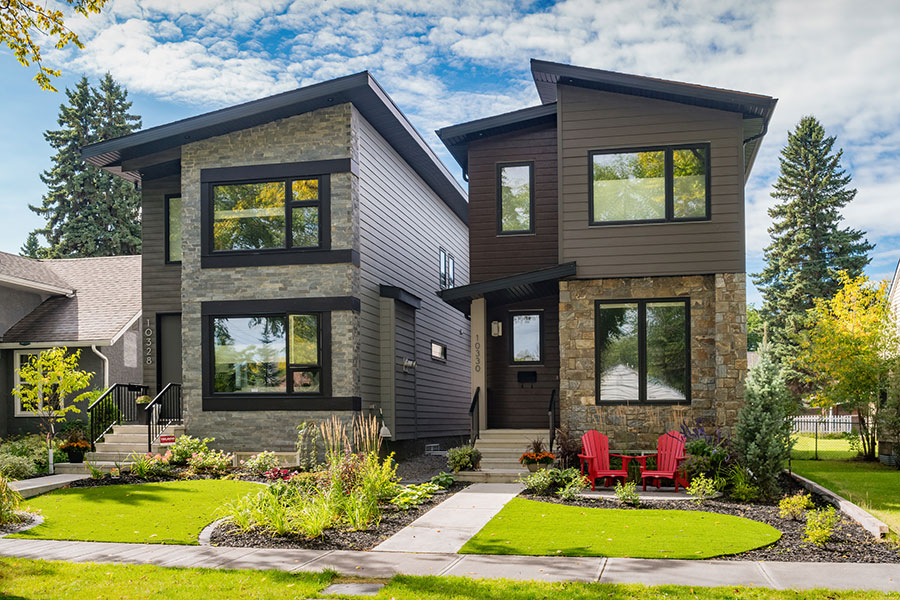A broker crunches the numbers on one of life’s biggest investments
The size of a mortgage, in relation to most of our costs, can be large enough to cause it to enter the realm of abstraction, a fuzzy background in a larger financial picture. But precisely because of that size, it’s worth bringing into focus.
That’s something that Renée Stribbell (Human Resources ’97) tries to do for her clients. “It’s the largest loan they’ll ever take on,” says the mortgage broker and owner of Your Mortgage Needs.
“But it’s also their largest asset. Down the road, that’s something that could possibly help them have very good financial security.”
That security might be even more important today, with steadily rising interest rates making homes and payments more expensive than in the relatively recent days of sub-2% mortgages.
“For anyone getting a mortgage, paying it off faster or sooner should always be part of the conversation, high rates or low rates,” says Stribbell.
Doing so can mean saving thousands in interest payments. Here, Stribbell shows how small efforts can make a big difference in creating a clearer – and brighter – financial picture.
A simple strategy

If you have other, higher-interest debts, deal with those first, says Stribbell.
“Then take half of what you were paying on that debt and use it to increase your [mortgage] payments. Use the other half for savings, fun, emergencies and so on.”
It may not sound like a lot but it will pay off in time, Stribbell points out, because of how interest on a mortgage is calculated. Each time you make a payment toward the principal, or the original amount borrowed, the interest is recalculated, and therefore lower. The more principal paid, the less interest ultimately charged.
“When you make any extra payment beyond what you’re supposed to, that money goes immediately toward principal.”
The more principal paid, the less interest ultimately charged.
You can ease into the process. “A lot of people think they need to increase their payments by large amounts to make an impact,” says Stribbell. “This is not the case. If you do gradual increases it has less impact on your budget and it seems more manageable.”
Consider these scenarios from Stribbell. Say you have a mortgage of $400,000 at a rate of 4.79% for a five-year term, with a 25-year amortization, or the amount of time it would take to repay the loan with no extra payments. At the outset, says Stribbell, your payments are $2,278.83 per month.
Now let’s say you:
- add $50 to your payments each year. That is, in year 1, your payments would be $2,328.83 per month, year 2 would be $2378.83, and so on. This would reduce your amortization to 21 years and five months, says Stribbell. “At the end of five years you would owe $343,036.06, as opposed to $352,850.00.” That’s $9,813.94 extra paid to the principal and $814.74 saved in interest over five years. Over the life of the mortgage, you would save around $41,000 in interest.
- add $100 each year. This would reduce your amortization to 18 years and 11 months and save $1,629.55 in interest within the first five years and more than $69,000 over the life of the mortgage. “You would owe $333,221.25 at the end of five years, which represents an additonal principal reduction of $19,628.75,” says Stribbell.
- add $200 each year. “Your amortization would go down to 15 years and seven months and you would save $3,259.19 in interest within the five years and more than $106,000 over the life of the mortgage. At the end of the five-year term, you’d owe $313,591.69, which includes an additional principal reduction of $39,258.31.
In the long run, each of these scenarios ultimately represents more money in the bank while you secure the asset that is your home.
“It’s about trying to look at the entire picture,” says Stribbell. “If you’ve got the cash flow – you don’t have any other debt repayments and you’ve got some other investments – take some of that and put it toward paying down your mortgage.” Waiting comes with a price.
“If you pay it off over 25 years, you’ll pay more for it,” says Stribbell, “as opposed to paying it off in 15 or 20.”
Banner image: benedek/istockphoto.com